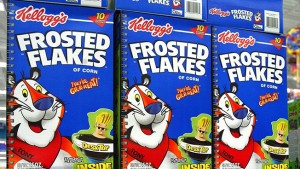The food marketing industry spends billions on advertising to its consumers every year. A sector of its consumer base that remains the most susceptible to the oftentimes untruthful persuasive statements plastered all over popular media outlets and the physical containers that are purchased for consumption are children. In this day in age, marketing companies are finding ways to target children on a more direct and personal level that avoid encountering any potential roadblocks of parental authorities. One of the biggest issues surrounding the marketing movement directed towards children is that the products they are being exposed to on a daily basis are energy-dense, low nutrient food which in turn has been shown to be linked to higher proportions of childhood obesity.
The leaders in food marketing continuously go to great lengths to transfer the decision making powers away from the parents and into the hands of the child. Companies such as Gepetto Group have been cited as utilizing the use of psychology and anthropology to understand what grabs the attention and makes kids tick. Paralleled by the sheer number of ads that surface in the digital sphere, advertising agencies have a successful model down pat, leaving parents ability to intervene and limit their child’s exposure to a whirlwind of unhealthy food ads often out of their hands.
Food tycoons such as McDonald’s, M&Ms, and Kellogg”s employ another strategy in their approach to advertising to children which involved pairing high-calorie, low-nutrient foods with beloved media characters or favorite media programs. For example, during the movie campaign for Shrek the Third, the food tycoons listed above signed licensing agreements to place the famous characters on their packaging and in their advertisements. There have been studies conducted that resulted in the findings that one 30-second food commercial can affect the brand choices of children as young as age two, and repeated exposure can have a much greater impact. This is prevalent with products such as sugary cereals. The control that these ad-moguls partnered with popular food companies has is incredible, leaving consumers faced with tough decisions daily; to become a victim or take control of your diet.



